Fieldmaster Euro GMM 300 Multi-cut Gearmower

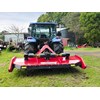
 The black mulching shroud wrapped around the back of the machine ensures all material is finely chopped.
The black mulching shroud wrapped around the back of the machine ensures all material is finely chopped.
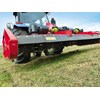
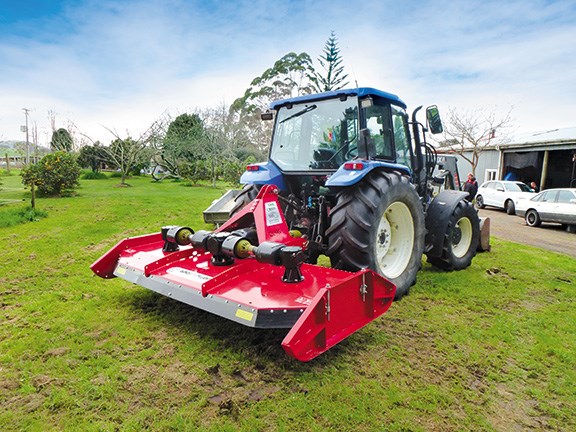

 Three reliable Italian gearboxes along with Spanish driveshafts transfer the drive to each of the rotors.
Three reliable Italian gearboxes along with Spanish driveshafts transfer the drive to each of the rotors.

 Heavy-duty skids on the side of the machine ensure it follows the ground contour.
Heavy-duty skids on the side of the machine ensure it follows the ground contour.
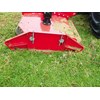
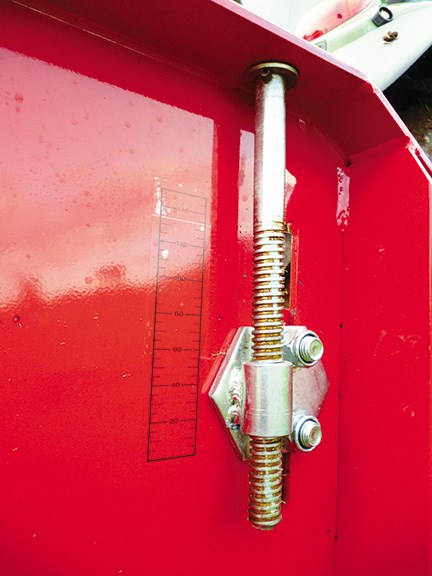 A coarse threaded screw adjuster and a scale is used to set the height of the machine.
A coarse threaded screw adjuster and a scale is used to set the height of the machine.


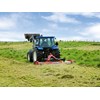
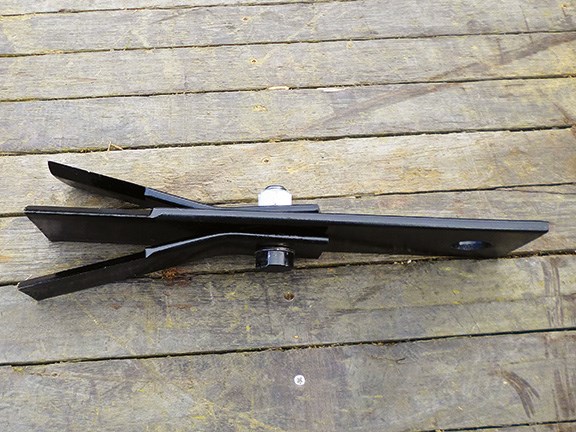 The unique triple-stack blades found on the machine.
The unique triple-stack blades found on the machine.


|

|
|
The black mulching shroud wrapped around the back of the machine ensures all material is finely chopped.
|

|

|
|
Three reliable Italian gearboxes along with Spanish driveshafts transfer the drive to each of the rotors.
|

|
|
Heavy-duty skids on the side of the machine ensure it follows the ground contour.
|

|
|
A coarse threaded screw adjuster and a scale is used to set the height of the machine.
|

|

|
|
The unique triple-stack blades found on the machine.
|
After undergoing a major redevelopment, Fieldmaster's new Euro GMM 300 Multi-cut Gearmower was ready for a once-over by Farm Trader's Brent Lilley.
While it may just be a happy coincidence that virtually all the machines I've tested recently have been proudly built right here in New Zealand, it has definitely highlighted for me the fact the agricultural sector of the manufacturing industry here is alive and kicking.
The level of innovation and design I have seen is outstanding, with real commitment from companies that listen to their customers and build equipment that not only suits our conditions, but will stand the test of time.
The most recent example is Pukekohe-based Fieldmaster, which has a reputation for building quality machines since the 1950s. I'm sure some avid Farm Trader readers may remember Fieldmaster's GMM mulcher from our pages a couple years ago. With the machine receiving a major redevelopment, we thought it was well worth another look.
The test
The water flowing down the mighty Waikato finally makes it out to sea at Port Waikato, on the west coast south of Auckland, after a massive 425-kilometre journey from the slopes of Mount Ruapehu through Lake Taupo. Port Waikato is also near to where Stephen 'Beaver' Donald was enjoying a spot of whitebaiting when he received the last minute call up to the 2011 Rugby World Cup final.
Arguably, my visit to view the new GMM 300 Multi-cut Gearmower was maybe not quite as dramatic. The lifestyle block, owned by Rudy Voschezang, an engineer at Fieldmaster, was an excellent location to show exactly what the machine was capable of, with a mix of rank, clumpy cocksfoot grass, matted kikuyu, and of course, some gorse.
The mulcher was set up on a 90-horsepower New Holland, which I'll give its dues — it did well to power the three-metre mulcher through some fairly serious foliage, testament also to the low power requirements of the Fieldmaster mulchers.
Construction
Fieldmaster has stuck with its modular design concept, which allows the mulcher to be configured with options to suit a variety of different situations and to be assembled quickly to keep costs low.
Up at the front of the machine you find a robust A-frame headstock, which has been seriously beefed up from preceding models. Every conceivable weak point has gained extra plates, gussets, and welding. I liked the fact the headstock is still bolted onto the deck with enough pre-drilled holes that it can configure as a rear- or front-mounted mulcher.
The deck itself is still built using a heavy-duty twin 5mm steel skin and it has also received some serious reinforcing under the deck for extra strength where it is needed. Heavy-duty pressed concave skids on the bottom of the sides of the mulcher are 80mm wide and built from 12mm steel for an extended lifespan and wide ground contact. They bolt onto the deck with four bolts on each side in a slotted hole and a coarse, threaded adjuster allows the cut height to be changed relatively easily using a scale on the side of the mower.
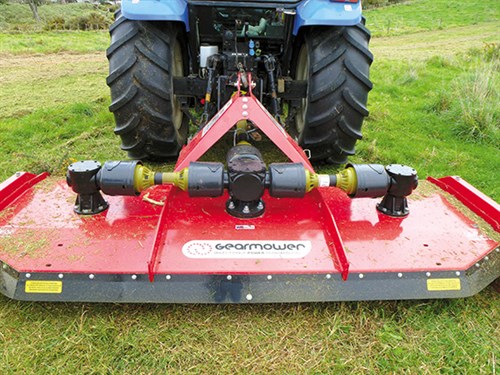
The deck and the skids once again have pre-drilled holes so a variety of extras, such as front and rear rollers, mulching shrouds, chainguards etc can be bolted on to fit individual requirements. All the steel components off the machine are bead-blasted after it is laser cut and welded, then finished with a baked powder coat. The inclusion of a UV stabiliser will keep the machine Fieldmaster red, rather than pink.
Driveline
The driveline on this three-metre, three-rotor model comes from the tractor through a driveshaft to the main central gearbox which splits the power to the centre rotor, and through driveshafts to the left and right rotors with their own 90-degree oil-filled gearboxes. And this is where the biggest changes have been made — high-quality gearboxes have been sourced and imported from Italy for reliable and trouble-free operation.
One thing I was critical of in the past was the lack of driveline overload protection, and this has also been addressed. Driveshafts with an incorporated cam clutch are now standard on all machines to prevent any damage. Interestingly, although the machine has been built to handle being operated at 1000rpm to tackle the toughest jobs, it still works effectively when operated at 540rpm in lighter situations, resulting in some fairly serious fuel savings.
Blades
The unique triple-stack blades found on this machine never cease to amaze me. They use a straight, flat 100mm by 10mm thick blade in the centre, with two smaller 60mm by 100mm blades above and below which bolt onto the main blade, creating 'Y' shape. This results in the material being cut not once, but three times (every time the blade hits it) which finely chops and mulches it.
Fieldmaster suggests (and I have seen for myself in the past) they are very versatile and ideal for mulching a wide range of materials, including kikuyu, rough pasture, weeds, and crop stubble. They certainly proved themselves again on the day of the test, quite literally destroying anything we tackled and creating fine mulch, even out of metre-high gorse.
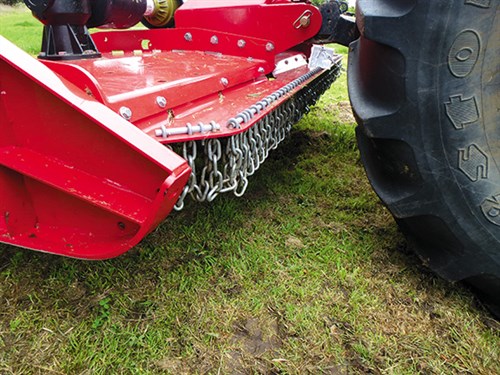
Just in case the triple-stack blade isn't versatile enough, Fieldmaster also offers a selection of other blades to suit almost any conditions, including extra-heavy-duty axe-head flails for use on big scrub and gorse, a thin gold-tipped blade ideal for clean-cut grass mowing, and a tungsten-coated blade for use in abrasive situations, such as on sand.
With only two blade holders on each rotor using only a single heavy bolt to hold the blade on, they can be interchanged very easily and quickly. All of the blades are also reversible to increase the lifespan and lower operating costs.
The verdict
Fieldmaster's GMM 300 Multi-cut Gearmower is another fine example of a quality product designed and built here in New Zealand to suit our conditions. The fact that a three-metre mulcher was operating behind a 90hp tractor at forward speeds of around five kilometres per hour in some reasonably heavy-going situations, while still maintaining a clean, tidy cut producing fine mulch, should speak for itself.
The direct driveline to the rotors minimises power losses, while the higher quality gearboxes and driveshafts, along with the incorporated cam clutch, are a huge improvement on previous models that will minimise damage.
The unique triple-stack blades once again impressed me — they do an exceptional job in a range of conditions — while the ability to fit a range of different blades further increases the versatility of the machine. For those looking for a mulcher, the Euro GMM 300 Multi-cut Gearmower is a very good place to start.
For the latest reviews of farm machinery, subscribe to Farm Trader magazine here.
Keep up to date in the industry by signing up to Farm Trader's free newsletter or liking us on Facebook






.jpg)
.jpg)
.jpg)

